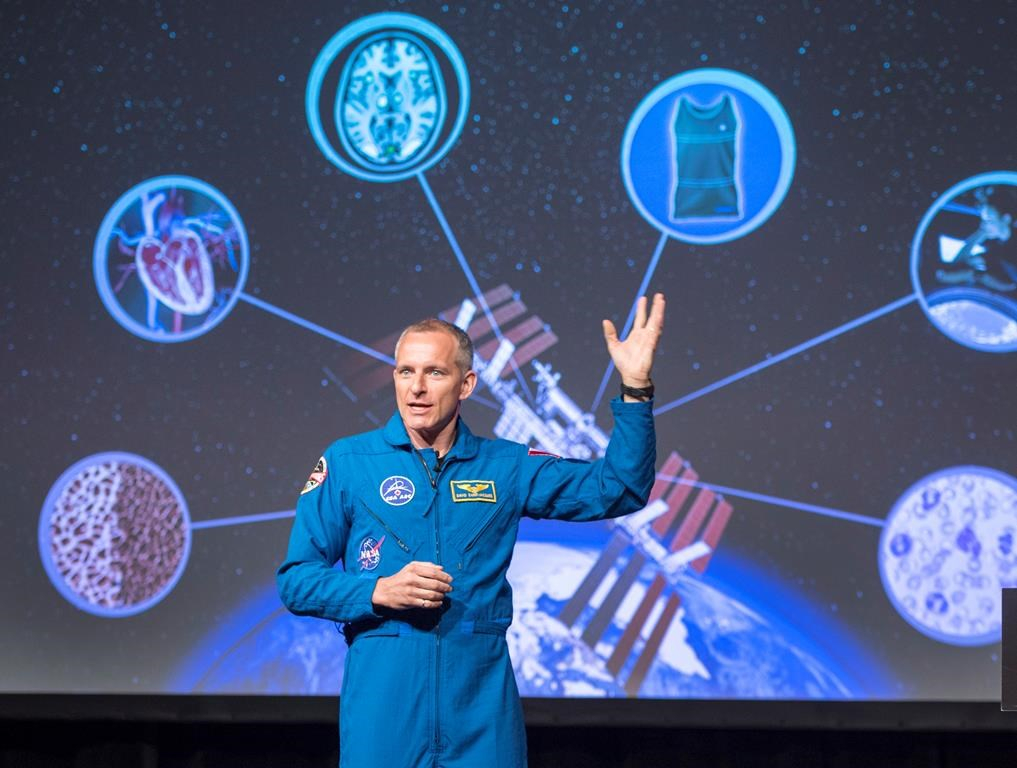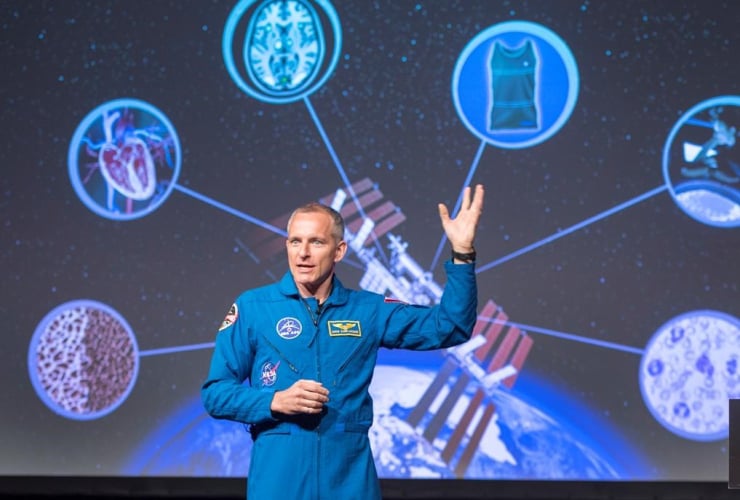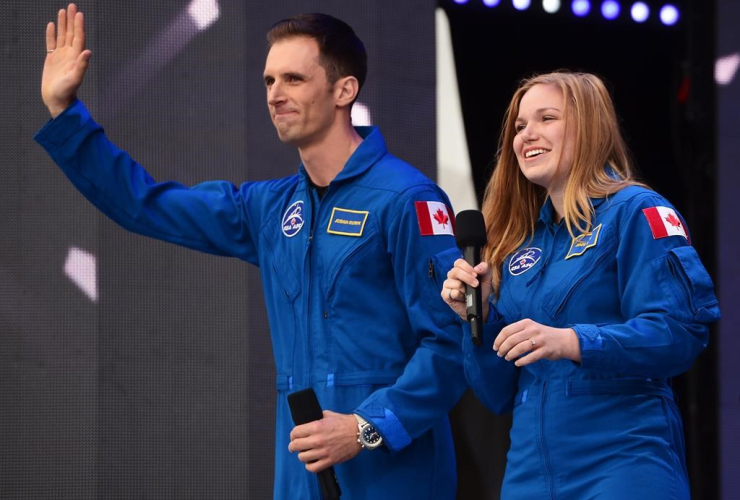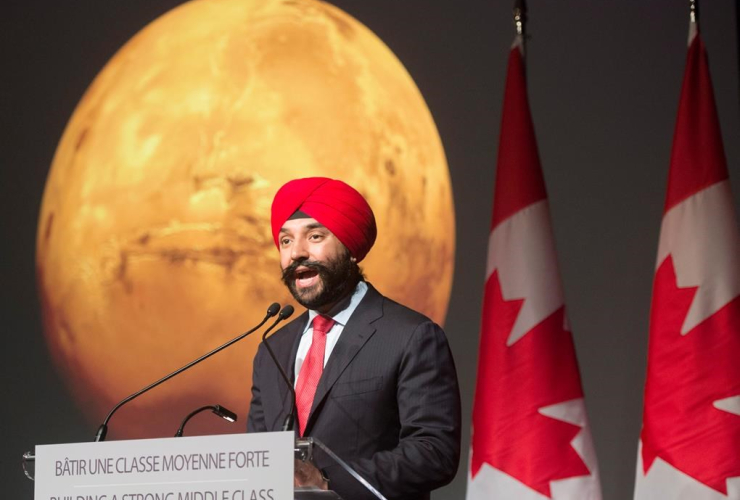The coming year is promising to be a busier one than usual for the Canadian Space Agency.
After a five-year lull, a Canadian astronaut will finally head back into space, with David Saint-Jacques scheduled to blast off for a long-term visit to the International Space Station in November 2018.
The last time a Canadian visited the orbiting space laboratory was in 2013 when Chris Hadfield completed a stay that lasted almost five months.
Saint-Jacques, an engineer and doctor, will begin his first space voyage when he launches aboard a Russian Soyuz spacecraft.
The 47-year-old astronaut, who will become the ninth Canadian to travel to space, will be joined on the trip by an American and a Russian.
Saint-Jacques, who will also be the Russian space capsule's co-pilot, says it takes a lot of time just to prepare for the blast-off.
"You've got to be ready on the launch pad, flying that rocket and knowing everything you have to know, so that's why the training is several years," he said recently.
Saint-Jacques will also have to deal with the psychological challenge of being away from the planet, his wife and three young children, aged six, four and one.
"So it's a huge challenge of getting a balance between your personal life, your love life and your professional life — getting all that to work together," he said.
Space agency president Sylvain Laporte says Saint-Jacques has been training extensively for his six-month mission.
"David shared with me that over the last 18 months, learning all that he needed to learn, to prepare for his mission was quite demanding," Laporte told The Canadian Press.
He said even though no Canadians have been to space since Hadfield, it's not out of the ordinary.
Laporte noted that the number of flights for Canadian astronauts is based on the country's contributions to the space station.
"We're on time with respect to our contributions so there's nothing abnormal with respect to the five years," he said.
Discussions, Laporte said, are underway with NASA to schedule a space trip for fellow Canadian astronaut Jeremy Hansen.
"If nothing changes it would be another five years," he admitted.
But Laporte added that Hansen could be space-bound sooner aboard one of the commercial spacecraft now being developed by American aerospace firms.
Canada's two newest astronauts, Joshua Kutryk and Jennifer Sidey are in basic training in Houston and will have to wait their turn.
Several other noteworthy space events will fill in the 2018 calendar at the space agency south of Montreal.
Three Earth observation satellites known as the RADARSAT Constellation are to be put into orbit in late summer.
The final costs for the mission rose to more than $1 billion from the original estimate of $600 million.
The satellites will keep an eye on maritime traffic and the Arctic, especially the increasingly busy Northwest Passage, where luxury ship cruises are now being offered.
"We now need to make sure that no one is going to be putting their passengers in danger and if emergency procedures need to be enacted, we'll be in a better position," Laporte said.
Norman Hannaford, who's with satellite developer MacDonald, Dettwiler and Associates (MDA), says the whole purpose is to monitor the North "to understand what vessels are entering Canadian waters (and) what they are doing."
The satellites will use radar to locate ships and identify vessels that broadcast an Automatic Identification System.
"More importantly, we can identify 'dark targets', ships which are not broadcasting A.I.S. as they are supposed to," Hannaford noted.
The Canadian space focus will also be on the OSIRIS-REx satellite in the coming months.
It's due to reach "Bennu", a near-Earth asteroid in 2018 and, with help from a Canadian contribution, take a small sample and return the fragment to Earth in 2023.
The Canadian instrument is a laser-based system that will create detailed 3D maps to help select where the sample will be collected.
In return, Canada will own four per cent of the returned sample.
"It's one of the very, very oldest asteroids in our galaxy so it's very interesting to take a look at it because we may find things that were there at the genesis of our solar system that may not be present anywhere else," Laporte noted.
The mission will also help improve the understanding of asteroids that could have an impact on Earth.
Another major Canadian event will be the groundbreaking for a rocket launch complex near Canso, on Nova Scotia's eastern coast.
The tiny fishing village has been touted as the future home of Canada's only year-round commercial spaceport.
Maritime Launch Services Ltd. plans to launch the medium-sized, Ukrainian-built Cyclone 4M rocket on a due south trajectory.
President Stephen Matier says the rocket complex will feature three sites; the launch pad area which is closest to the water, the facility where the different rocket stages and payloads would be integrated, and the launch control centre.





Comments